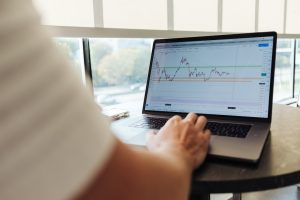The foreign exchange (forex) market is the largest and most liquid financial market in the world, with an estimated daily trading volume of $5.3 trillion. It is where currencies are bought, sold, and exchanged, with the aim of making a profit from the fluctuations in exchange rates. Analyzing the forex market is crucial to making informed trading decisions, but it can be overwhelming for beginners. In this article, we will explain how to analyze the forex market and identify potential trading opportunities.
1. Fundamental Analysis
Fundamental analysis involves analyzing economic, political, and social factors that affect the value of currencies. These factors include inflation rates, interest rates, GDP, unemployment rates, political stability, and global events such as wars and natural disasters. Traders use the information gathered from fundamental analysis to determine the health of a country’s economy and the likely direction of its currency.
For example, if a country’s interest rates are raised, its currency may appreciate as investors seek higher returns. On the other hand, if a country’s GDP is weak, its currency may depreciate as investors lose confidence in its economy. Traders can keep up to date with the latest news and economic data by following financial news outlets and economic calendars.
2. Technical Analysis
Technical analysis involves studying price charts and identifying patterns and trends that can indicate potential trading opportunities. Traders use technical indicators such as moving averages, MACD, and RSI to identify trends and momentum in the market. Technical analysis can also help traders identify support and resistance levels, which are areas where the price is likely to bounce off or break through.
For example, if a currency pair is trading in a bullish trend and breaks through a resistance level, it may signal a potential buy opportunity. Conversely, if a currency pair is trading in a bearish trend and breaks through a support level, it may signal a potential sell opportunity. Traders can use charting software to analyze price charts and technical indicators.
3. Sentiment Analysis
Sentiment analysis involves analyzing the overall market sentiment towards a particular currency or currency pair. Traders can use sentiment analysis to gauge market expectations and sentiment, which can help them identify potential trading opportunities.
For example, if the majority of traders are bullish on a particular currency pair, it may signal a potential buy opportunity. Conversely, if the majority of traders are bearish on a particular currency pair, it may signal a potential sell opportunity. Traders can use sentiment indicators such as the COT report and the Speculative Sentiment Index (SSI) to analyze market sentiment.
4. Intermarket Analysis
Intermarket analysis involves analyzing the relationships between different markets, such as the forex market, stock market, and commodity market. Traders can use intermarket analysis to identify potential trading opportunities based on the correlations between these markets.
For example, if the stock market is trading in a bullish trend, it may signal a potential buy opportunity for currencies that are positively correlated with stocks, such as the Australian dollar. Conversely, if the commodity market is trading in a bearish trend, it may signal a potential sell opportunity for currencies that are negatively correlated with commodities, such as the Canadian dollar. Traders can use intermarket analysis to identify potential trading opportunities based on these correlations.
In conclusion, analyzing the forex market involves a combination of fundamental, technical, sentiment, and intermarket analysis. Traders can use these different forms of analysis to identify potential trading opportunities and make informed trading decisions. It is important to keep up to date with the latest news and economic data, as well as to use charting software and sentiment indicators to analyze price charts and market sentiment. With practice and experience, traders can develop their own trading strategies and achieve success in the forex market.






